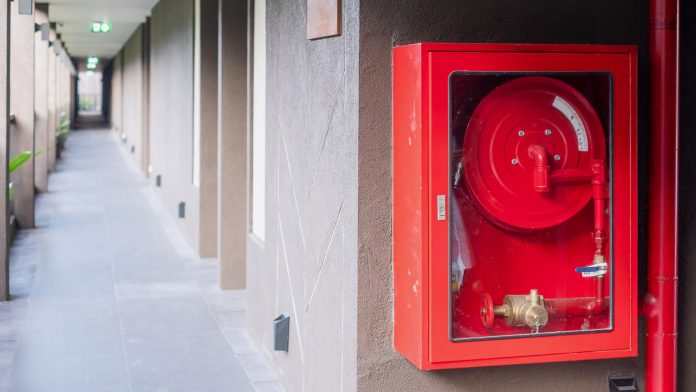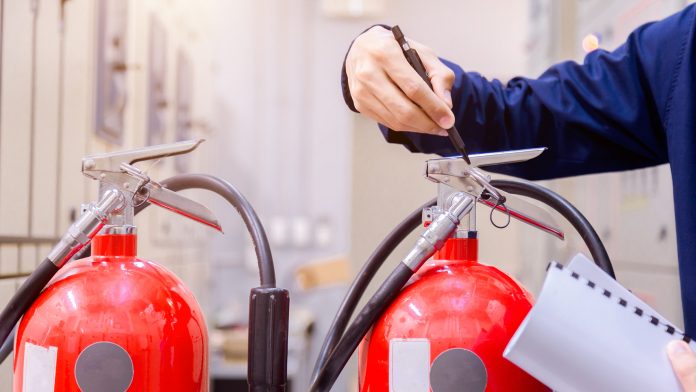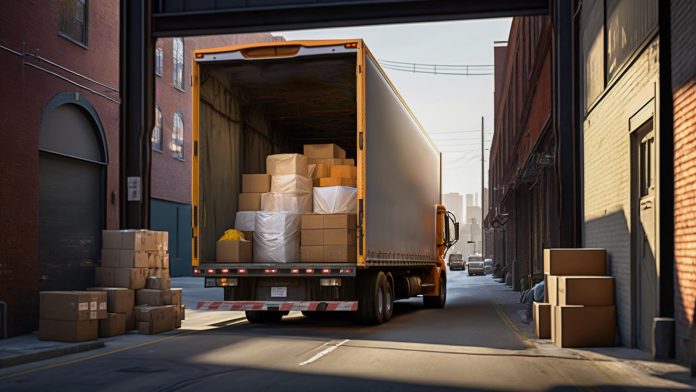Key Considerations For Fire Safety Inspections in Commercial Buildings

Fire safety inspections play a critical role in ensuring the safety and well-being of occupants in commercial buildings. By identifying potential fire hazards, assessing compliance with building codes and regulations, and implementing corrective measures, fire safety inspections help prevent fires and mitigate risks in the event of an emergency.
With the help of a top-rated fire investigation company, in this article we’ll explore the vital considerations for conducting thorough and effective fire safety inspections in commercial buildings, helping property owners, managers, and inspectors prioritize safety and compliance.
What Should Be Considered With Fire Safety Inspections For A Commercial Building?

Protecting the lives and property of occupants is a top priority, and fire safety inspections play a significant role in identifying and mitigating fire hazards in commercial buildings. Here’s what to know:
Understanding Regulatory Requirements

Before conducting aninspection, it’s essential to familiarize yourself with relevant regulatory requirements at the local, state, and national levels. Building codes, fire safety standards, and regulations may vary depending on the jurisdiction and type of commercial building. Ensure that you have access to up-to-date codes and standards and understand how they apply to the specific building you are inspecting.
1. Identifying Potential Fire Hazards
During an inspection, carefully assess the building for potential fire hazards, including electrical deficiencies, combustible materials, blocked exits, inadequate fire suppression systems, and improper storage of flammable substances. Pay close attention to areas with high fire risk, such as kitchens, mechanical rooms, storage areas, and electrical panels. Document any hazards or deficiencies observed during the inspection and prioritize corrective actions based on their severity.
2. Ensuring Adequate Fire Detection And Alarm Systems
Verify that the building is equipped with adequate fire detection and alarm systems that are properly installed, maintained, and tested according to regulatory requirements. Test smoke detectors, fire alarms, and sprinkler systems to ensure they are functional and responsive in the event of a fire. Evaluate the placement of detectors and alarms to ensure adequate coverage throughout the building, including sleeping areas, corridors, and common areas.
3. Assessing Means Of Egress
Evaluate the means of egress in the building to ensure that occupants can safely evacuate in the event of a fire. Check for obstructions or blockages in exit pathways, including doors, stairwells, and corridors. Ensure that exit signs are clearly visible and properly illuminated, and that emergency lighting is functional in the event of a power outage. Verify that exit doors are equipped with panic hardware and that they open outward and lead to a safe area outside the building.
4. Reviewing Fire Suppression Systems
Inspect fire suppression systems, including sprinklers, fire extinguishers, and fire hoses, to ensure they are properly maintained and in compliance with regulatory standards. Verify that sprinkler heads are unobstructed and free from damage, and that fire extinguishers are properly charged and located in accessible locations throughout the building. Train staff members on the proper use of fire extinguishers and ensure they are familiar with emergency procedures.
5. Educating Building Occupants
Educate building occupants about fire safety practices, emergency evacuation procedures, and the importance of maintaining a fire-safe environment. Conduct regular fire drills and training exercises to familiarize occupants with evacuation routes and emergency protocols. Provide clear instructions on how to report fire hazards or suspicious activity and encourage a culture of vigilance and accountability among building occupants.
6. Documenting Inspection Findings And Recommendations
Document all findings and recommendations from the fire safety inspection in a comprehensive report, including photographs, diagrams, and observations. Clearly communicate any deficiencies or hazards identified during the inspection and prioritize corrective actions based on their potential impact on fire safety. Provide recommendations for addressing deficiencies and improving overall fire safety in the building, including budget estimates and timelines for implementation.
Benefits Of Fire Safety Inspections In Commercial Buildings

There are several benefits of Fire safety inspections in commercial buildings. You need to be well aware of the facts that can assist you in meeting your requirements with complete ease. Some of the key factors that you know here are as follows:-
1. Compliance
Inspections ensure that the building meets local fire safety codes and regulations, keeping the occupants and property in compliance with the law. You need to be well aware of the compliance in case your premise falls into the trap of fire problems. Try to ensure that you maintain compliance with complete ease.
2. Safety
Inspections help identify potential fire hazards and ensure that necessary precautions are in place to protect occupants in case of a fire. Ensure that the safety of the commercial buildings is kept intact; due to this factor, fire inspection is important. This can keep the residents in peace of mind from the chances of any kind of fire accident.
3. Prevention
Regular inspections can help prevent fires by identifying and addressing issues such as faulty wiring, overloaded circuits, or flammable materials. Flammable materials can lead to fire accidents. So, if you want to prevent fire accidents, you must consider some of the crucial facts that can make things more complex for you.
4. Early Detection
Inspections often include checking fire detection and alarm systems, ensuring they are functional and can alert occupants in case of a fire. Early detection of fire accidents from the use of flammable products can lead to any kind of serious accidents. This can lead to serious problems for you in the long run. You need to identify the facts that can boost the chances of your brand value to a greater level.
5. Emergency Preparedness
Inspections can help ensure that fire safety plans are in place and occupants are aware of evacuation procedures and emergency exits. You must prepare yourself for any kinds of emergencies that can bother you in the long run. Ensure that you are in a position to save lives if you find yourself in a firefighting situation. This can be possible once you seek assistance with fire safety inspections in commercial buildings.
6. Risk Management
By identifying and mitigating fire hazards, inspections help reduce the risk of fire-related injuries, property damage, and business disruptions. You need to identify the best options that can make things easier for you to reach your goals with complete ease. Without knowing the reality, things can become more complex for you in attaining your requirements.
7. Insurance Benefits
Some insurance companies offer discounts for buildings that undergo regular fire safety inspections, as they are considered lower risk. You need to identify the best options that can boost the chances of getting the required insurance amount within a shorter version of time. Keep the process in proper parity.
Final Take Away
Hence, if you want to keep the safety inspections in commercial buildings with proper parity. You need to be well aware of the facts about the measures that you should take in this regard. Otherwise, the complete process will be in disarray.
You can share your views with us in the comment box. This will help us to make people aware of the requirements of keeping fire safety inspections in commercial buildings. Keep your views in proper parity in this regard.
Read More:













